#walpurti
Explore tagged Tumblr posts
Text
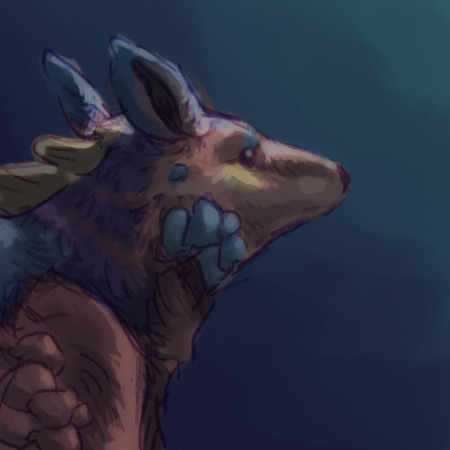
gaze
marsupials were on my mind so i made this char, decided i wanted to keep them, and then wanted to make them a pfp but things went off track oops
lofi music is making a comeback in my mental music war so um !!
keep reading for the ref of them :]] (their name is quill for now)
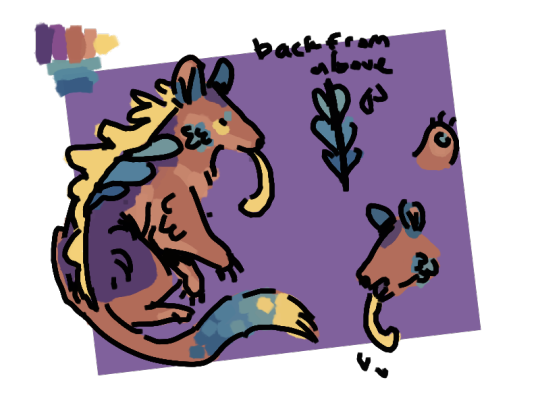
#art#digital art#marsupial#numbat#noombat#walpurti#marsupial art#animal#animal art#animal characters#otters art#otters designs#my ocs#quill#if anyone has any cool names for them i'd love to hear them !!!#oh also if anyone was curious they are based off of numbats/noombats/walpurtis!!!#island exclusive species are so cool :000 madagascar and australia animals my beloved#i bet there are tons of other places but i'm too lazy to list them all rn#just realized the tounge is pointed but i made it round oops e h
4 notes
·
View notes
Text

The numbat (Myrmecobius fasciatus), also known as the noombat or walpurti is an insectivorous marsupial. It is diurnal and its diet consists almost exclusively of termites
148 notes
·
View notes
Note
Je t'en prie! Assigne-moi une Bête 🥚
comme tu le souhaites mon ami!

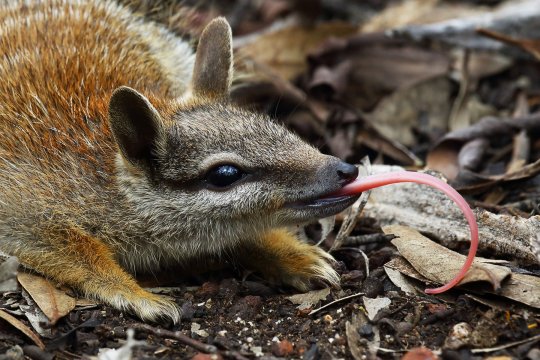
walpurti!
(Myrmecobius fasciatus)
82 notes
·
View notes
Text



Numbat/walpurti - endangered
📍 Australia
21 notes
·
View notes
Text

NUMBAT!
Known as noombat or walpurti
Insectivorous marsupial
Diet mostly termites
Origin: Australia
Diurnal (active chiefly in the daytime)
Barely chews its food because of its soft diet
Contain most of their water through their diet
Prefer Eucalypt forests ... Wikipedia facts
2 notes
·
View notes
Photo






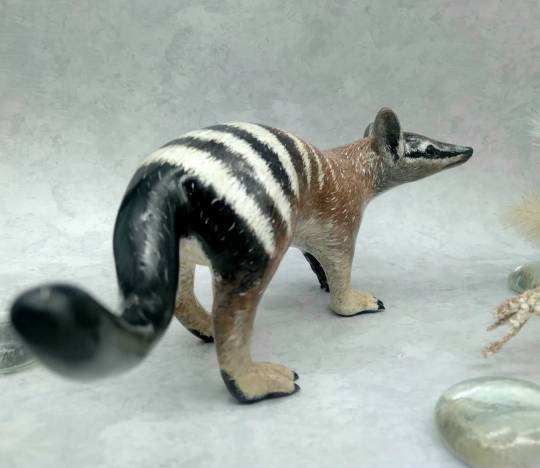

A one-of-a-kind sculpture depicting a semi-realistic Numbat.
The Numbat is a small, insectivorous marsupial native to Australia. They are currently endangered and inhabit only a small sliver of their previous range.
This one took a lot of time. After sculpting the numbat from clay, I hand-painted each individual hair with acrylics. It took me multiple workdays to paint this guy.
The Numbat is available in my shop. Go here.
#Numbat#wildlife#art#endangered#Australian wildlife#sculpture#australian#animal#animals#noombat#marsupial#endangered animals#walpurti#cute#realistic#realistic animal art#clay
26 notes
·
View notes
Text
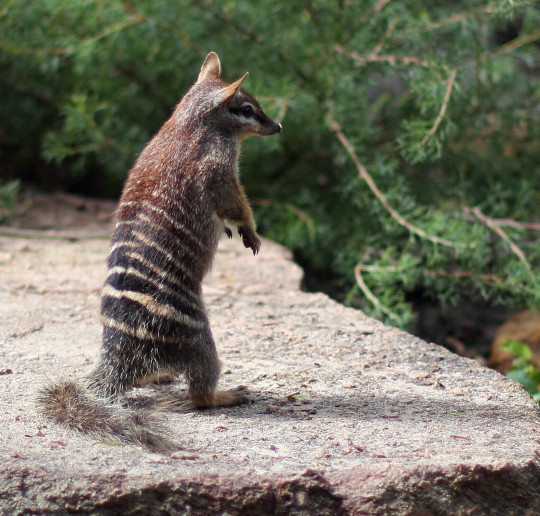
Numbat Myrmecobius fasciatus
Source: S J Bennett
3 notes
·
View notes
Photo
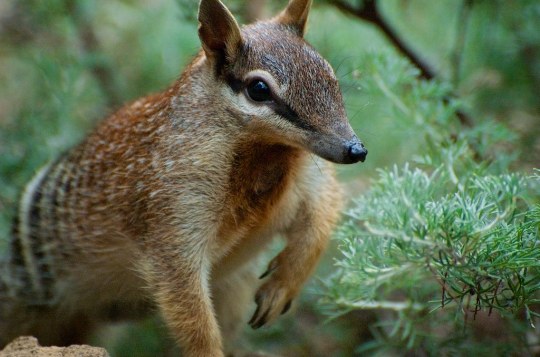

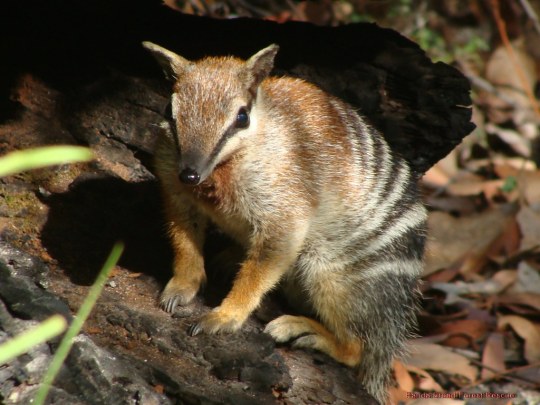
Here is an animal you might not know about. This is a numbat, and it’s from western Australia. If you don’t like termites you’d like this dude because it almost exclusively eats termites. Unfortunately this cute marsupial is endangered.
#numbat#marsupial#marsupials#animals#interesting animals#animals you may not know about#noombat#walpurti#endangered animals
14 notes
·
View notes
Photo

the numbat. just because it’s fun to say. and it’s pretty cute too! original antique engraving c.1877 • listing him & more extraordinary & cute fauna today... #availableonetsy #endangeredspecies #marsupial #australia #australiana #antique #antiqueprintsforsale #antiqueprint #antiqueprintstore #noombat #walpurti #numbat #endangered #cuteanimals #soldonetsy #forsaleonetsy #etsyshop #antiqueseller #blackandwhite (at antiqueprintstore.com) https://www.instagram.com/p/CIRM01hpjm8/?igshid=1pky3p4pi1y9n
#availableonetsy#endangeredspecies#marsupial#australia#australiana#antique#antiqueprintsforsale#antiqueprint#antiqueprintstore#noombat#walpurti#numbat#endangered#cuteanimals#soldonetsy#forsaleonetsy#etsyshop#antiqueseller#blackandwhite
0 notes
Photo
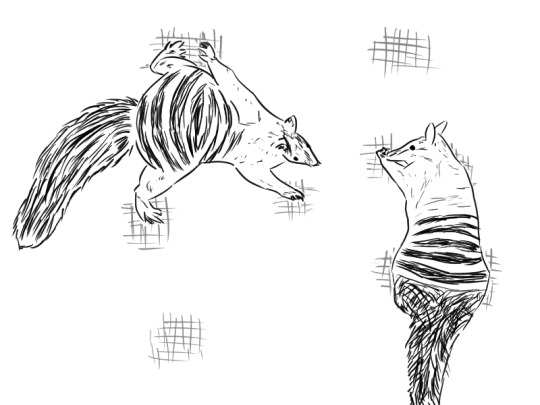
#beginner artist#digital drawing#SouthSummerSketches#Australian animal#small animal#marsupial#numbat#noombat#walpurti#endangered species#endangered animal#endangered wildlfie
0 notes
Photo

November 6th is...
Bison Day - The official National Mammal of the United States, the iconic North American Bison, has played a cultural, economic and environmental role in the history of the country. Central to the livelihood of Native Americans, they are also a healthy food source and vital to religious ceremonies. The bison is the largest land mammal in North America, with males weighing up to 2,000 pounds and standing up to 6 feet tall. While cows may be smaller at 1,000 pounds and up to 5 feet tall, they’re still mighty powerful.
International Day For Preventing The Exploitation Of The Environment In War And Armed Conflict - The day seeks to make people aware of the consequences that war and conflict have on the environment. Loss of life and the destruction of property are obvious consequences of war and armed conflict. There is another consequence as well. This is the negative effect that war and conflict has on the environment.
Nachos Day - First created sometime around 1943, the popular and loved nachos are of Mexican origin. History tells us that Ignacio “Nacho” Anaya created the original nachos in 1943. According to his son, Nacho was the maître d’ at the El Moderno Restaurant in Piedras Negras. One evening after the kitchen staff had left, a group of U.S. Army wives stationed at Fort Duncan in Eagle Pass came into the restaurant. After a long day of shopping, they were hungry and asked for a snack. Anaya prepared some tostadas cut into triangles. After topping them with shredded cheese and sliced jalapenos, he heated the dish in the oven. They were such a hit with the Army wives that they named the snack “Nacho’s Special” before he could make another batch.Word of the new creation quickly traveled. People from all over tried them, loved them, and over time, the name changed. Eventually, Nacho’s special became special nachos.
Play Outside Day - A reminder to stretch our legs and expend some energy in the great outdoors.
Saxophone Day - Commemorates the birth of the woodwind’s inventor, Adolphe Sax, on November 6th. The saxophone is one of the main instruments in jazz music. Born on November 6, 1814, Adolphe Sax invented many musical instruments including the saxophone. Sax constructed saxophones in several sizes in the early 1840s. On June 28, 1846, he received a 15-year patent for the instrument. The patent encompassed 14 different versions of the fundamental design, split into two categories of seven instruments each and ranging from sopranino to contrabass.
World Numbat Day - A numbat is a small termite-eating marsupial that lives in Australia. It has a black and white striped back along with a bushy tail. A few other names for the numbat include the banded anteater, noombat, and walpurti. Its long, sticky tongue helps it capture underground termites. While numbats are considered marsupials, they don’t really have a pouch to carry their young. Instead, they have skinfolds that cover their babies while they drink milk from their mother.
20 notes
·
View notes
Photo
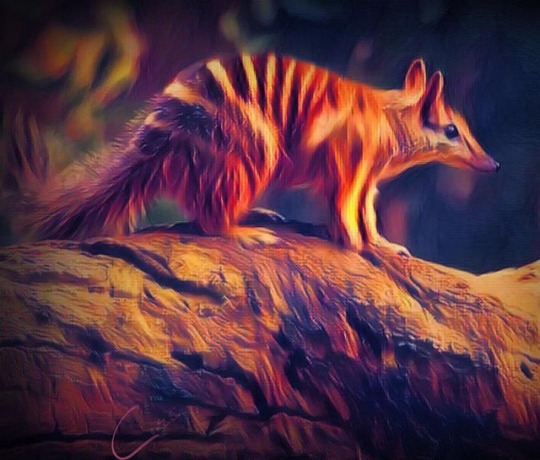
Encore post from exactly one year ago... Numbat aka Walpurti (Australian Marsupial) The numbat feeds almost exclusively on termites. It is an endangered species that lives in small pockets in western and south Australia. I have never seen this animal on any nature show and discovered it thanks to YouTube videos. This was created by me from a screenshot of a YouTube video that was processed using an app template by Creo to produce the painting-like effect. #Numbat #Walpurti #Marsupial #AustralianMarsupial #Australia #Cute #Kawaii #TermiteEater #PhotoManipulation https://www.instagram.com/p/Bp-_CNwhEOa/?utm_source=ig_tumblr_share&igshid=1847fzbwjqkku
0 notes
Text
Australian Mammals that you didn’t know existed
You hear a lot about Kangaroos and Koalas and such, so I thought I’d post some animals that are unknown to lots of people, even some Aussies don’t realise we have them. Sadly most of these are on the endagered species list.
Also some fun facts added so you can have an idea of how awesome they are.
Quolls
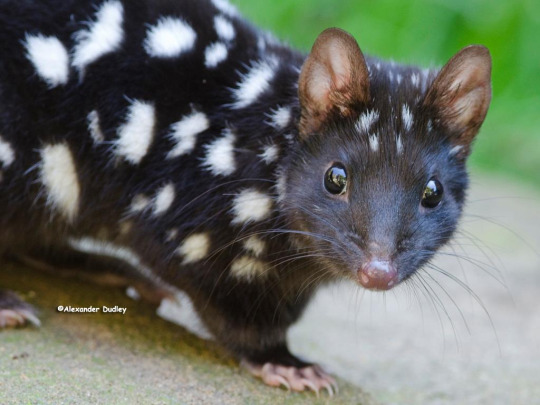
Considered Australia’s ‘native cat’ these guys are carnivorous marsupials and have the ability to bite through bone. ‘Quoll’ is an Aboriginal term meaning tiger cat (although they have spots not stripes so I think we translated wrong) If you find an animal that has been killed an turning inside out, it’s probably been eaten by a Quoll. These guys use their nimble hands to get to the yummy meat and bones and avoid all the fur, very clever! 4 species; Eastern Quoll, Spotted-Tailed Quoll (or Tiger Quoll), Western Quoll (or chuditch) and Northern Quoll. ranging in size from 25cm to 75 cm long.
Kultarr
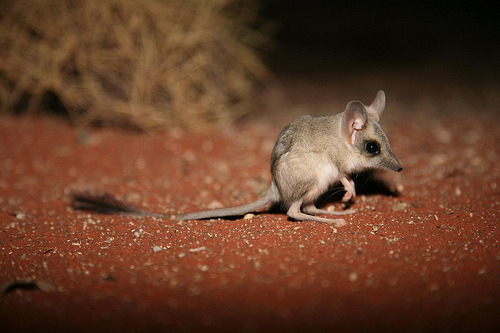
Cute little insect eaters, again a marsupial. Can move at speeds of around 13km/hr. Only about 10cm long. So damn cute, look at that tail!
Bettongs

Marsupial. Of which there are 5 species (and at least another 2 extinct); Eastern Bettong, Boodie, Woylie, Northern Bettong and Rufous Rat-Kangaroo (or Rufous Bettong). They seem to get along well with wombats, where I work they enter the wombat exhibits of a night to share their food.
Bilby

Marsupial. There was once 2 species of Bilby, sadly the Lesser Bilby became extinct in the 1950s and the Greater Bilby is greatly endangered. In the same family as Bandicoots. Omnivores with backwards facing pouches (as they dig a lot this stops dirt getting in their pouch). Australian’s know these guys through the story of the Easter Bilby. Rabbits are considered a major reason for their decrease in numbers as they eat all the food and out-breed the Bilbies.
Numbat
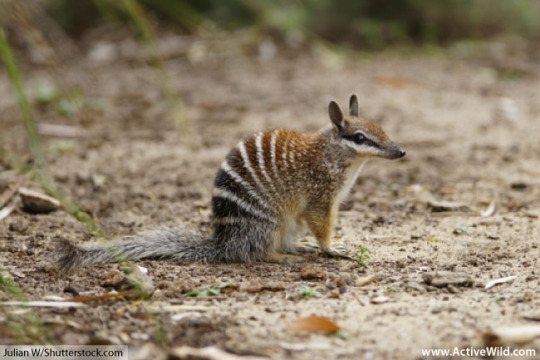
Marsupial. Aka the banded anteater or Walpurti. Mainly eats termites. Emblem of Western Australia. Up to 45cm long. One of the few marsupials that are diurnal (active of a day). Eats up to 20,000 termites each day. Estimated population of less than 1000.
Grey-Headed Flying Fox

Aka Fruit Bat. Placental mammal. Called a flying fox because they have a fox-like face and can fly. Babies are called pups. Megabat. Wingspan of about 1m. May travel 50kms in one night for food. Eats pollen, nectar, sap and fruit. Long distance seed distributors and plant pollenators. Each colony plants around 30,000 trees a night. Without these guys we don’t have any of our lovely bush and ecosystem that we all rely on. Have very good eyesight and no echolocation.
Greater Stick-Nest Rat
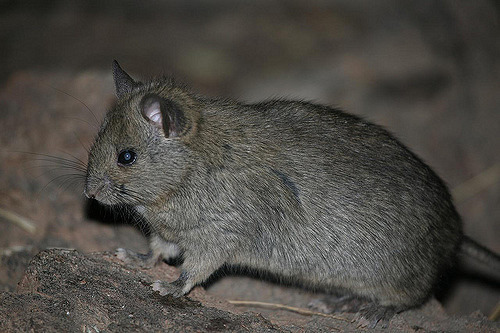
Placental mammal. Up to 26cm long. Don’t have a ratty face. Were extinct on the mainland but through breeding programs have been re-introduced. Herbivores. Chew branches to length and weave them together to make a nest which can be up to 1m high and 1.5m wide.
Other unknown Australian Mammals you can look up:
Antechinus Pygmy Possum Feathertail Glider (smallest glider in the world) Southern Ningaui Greater Glider Potoroos Pademelons Eastern False Pipistrelle
Sadly lots of these could go extinct in our lifetime, and people haven’t even had the chance to really get to appreciate them yet. **PS the Koala is also in danger of becoming extinct in the wild
#Australian Mammals#Aussie Animals#Mammals#Marsupials#Bilby#Numbat#Rat#Bat#Flying Fox#Bettong#Quoll#Kultarr#the more you know#education#animals#Endangered#all credit to the people who took the photos
9K notes
·
View notes
Text
Numbat
Numbat Facts The truly amazing Numbat remains perhaps one of the least known of all marsupials. The remarkable creature also goes by the other common names of the walpurti or the noombat. This fascinating animal further bears the somewhat cumbersome scientific name of Myrmecobius fasciatus. However, regardless of the name one calls it by, it […]
The post Numbat appeared first on Our Breathing Planet.
from WordPress https://ift.tt/38YBXKg via IFTTT
0 notes
Photo
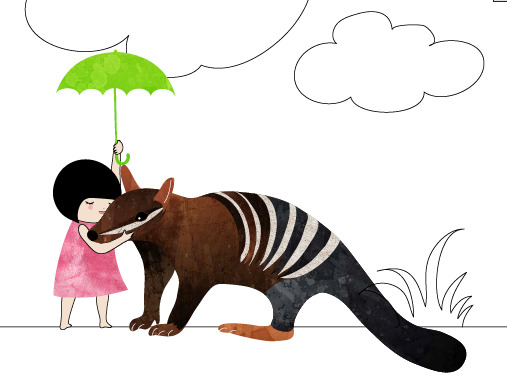
Numbat
#numbat#marsupial#banded anteater#walpurti#western australia#children's illustration#illustrator#illustration#lumi#endangered species
4 notes
·
View notes
Photo

2 notes
·
View notes